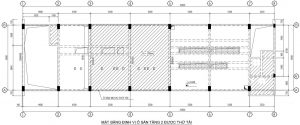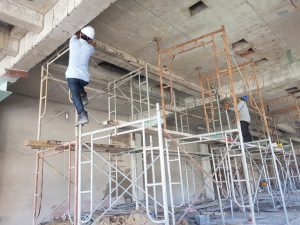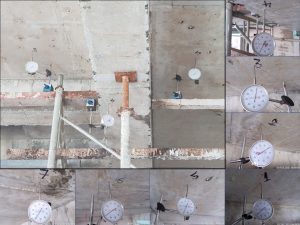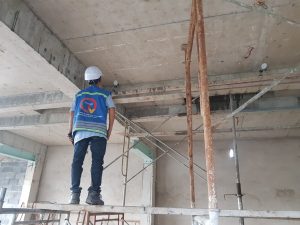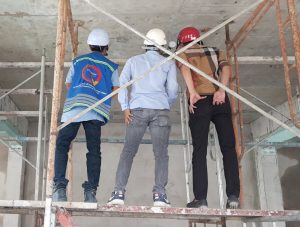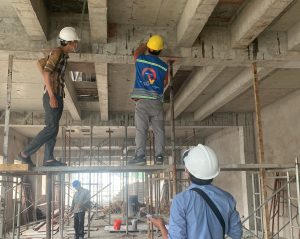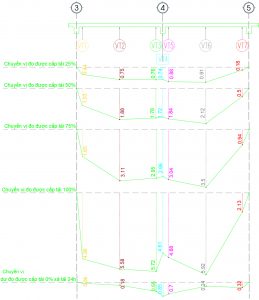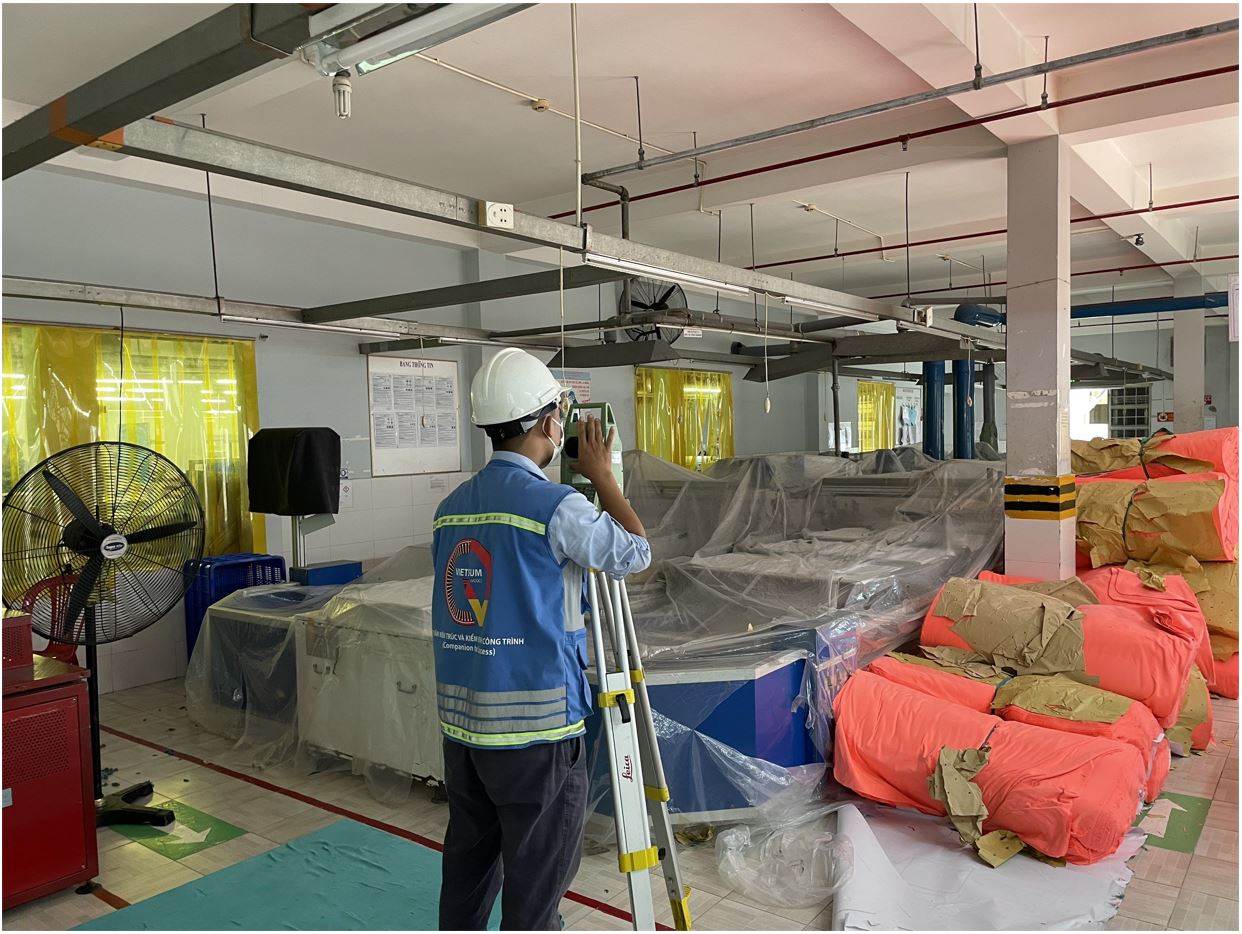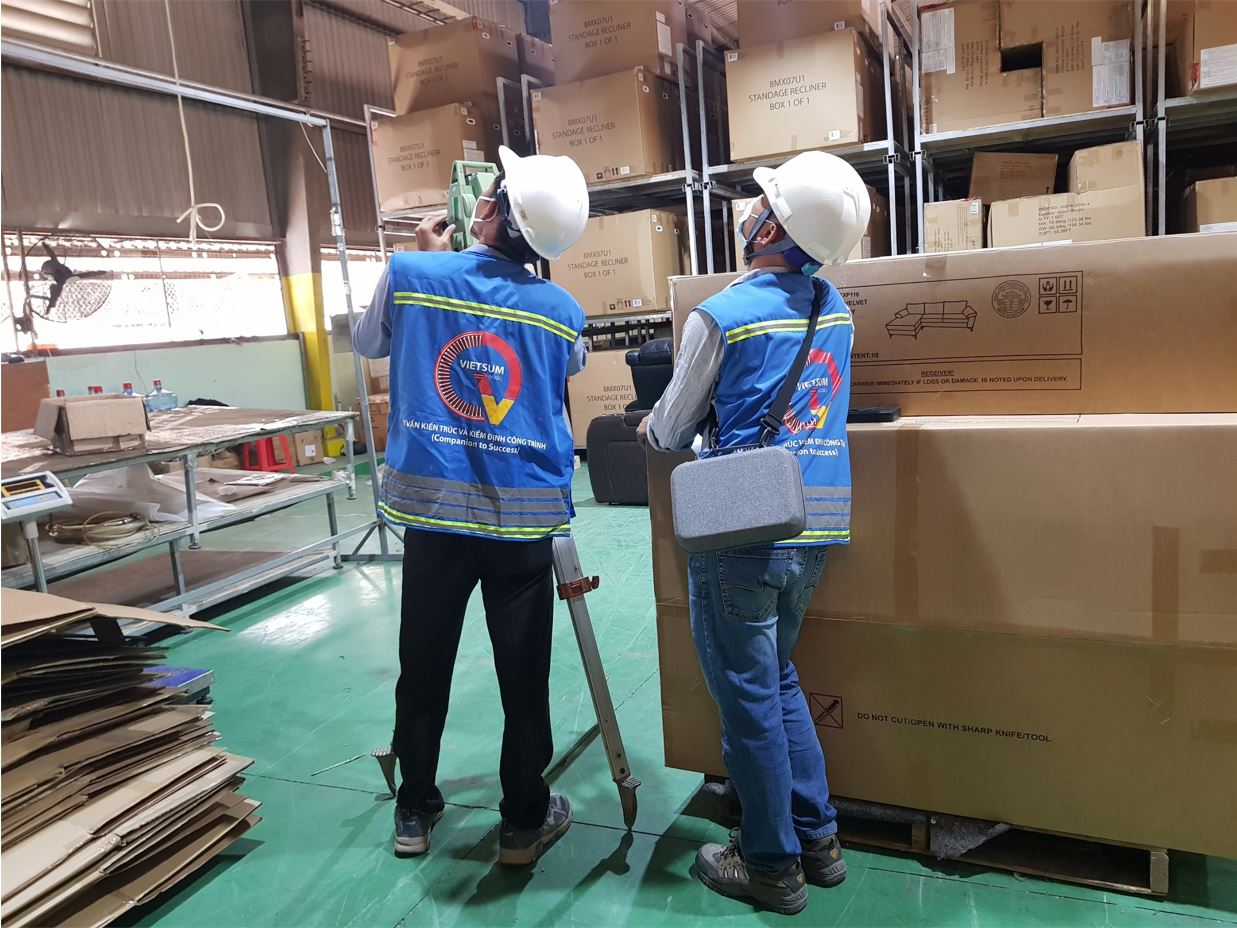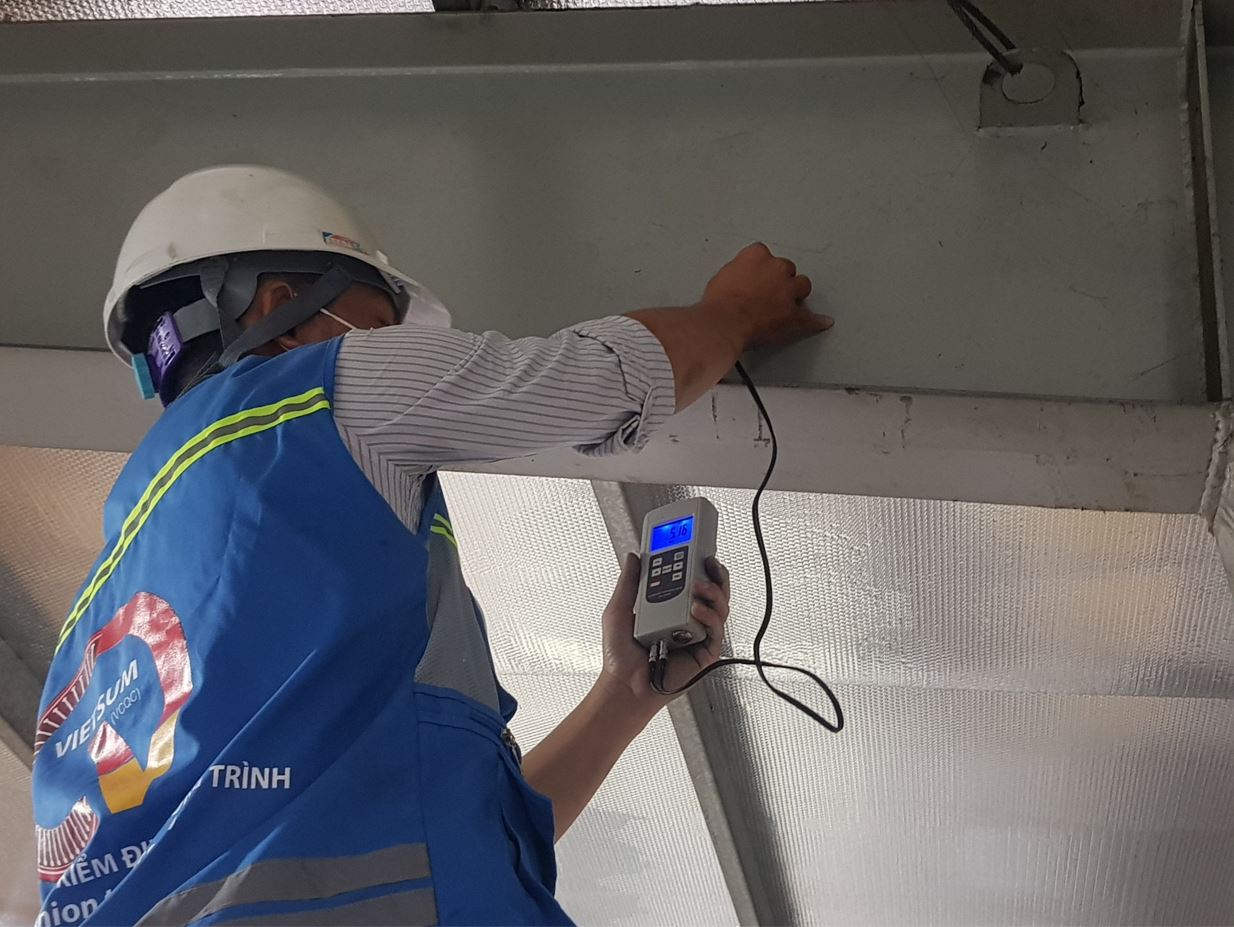Construction inspection – Construction quality inspection – Floor load test serving to test the bearing capacity of reinforced concrete floors and check and monitor the generation of cracks during the construction inspection – load test floor.
Work: REHABILITATION 110KV ELECTRICAL SUBSTATION – DISTRICT 8
Items: ELECTRICAL CONTROL CENTER BUILDING
Object Test: FLOOR 2 AXIS A-B/3-5
Location: WARD 2, DISTRICT 8, HO CHI MINH CITY
/……………………………………………………/
The construction scale is 8.5m x 32.82m; total height of 14.7m compared to the roadbed; number of floors with 3 floors and 1 concrete roof; The work has a foundation structure and foundation wall bracing with reinforced concrete poured in the whole block; Column, beam, and floor frame structure made of cast-in-place reinforced concrete;
At the time of load test, the construction of the reinforcement of the floor beams has been completed and the construction is in progress.
Reason for building inspection – floor load test: to prove the load carrying capacity after being repaired, reinforced and Assess the bearing capacity of the structural part.
The selected location for static load testing: is the 2-axis floor beam (A-B)/(3-5). The floor space where GIS equipment is placed has the largest standard live load in the building (According to the design documents, the standard live load using the GIS floor area is 750kg/m2).
Determination of test load: 𝑃𝑇𝑁 = 𝐷𝐿 + 90% × 𝐿𝐿 × 𝑛 = 140 + 90% × 750 × 1.2 = 950𝑘𝐺/𝑚2
The construction standards applicable accredited VietSum:
TCVN 9344: 2012: Reinforced concrete structures – Evaluation of the durability of flexural structural members on construction by static load test method;
TCVN 2737:1995: Loads and actions – Design standards;
Relevant current regulations.
Construction inspection process – floor load test at VietSum:
For the purpose of determining the crack development during floor static testing, VietSum test offers a 5-step crack monitoring method.:
Step 1: Overall survey and orderly marking of cracks in beams and floors;
Step 2: Determination of crack length, relative width, and beam crack depth by ultrasonic method and crack length measurement.
Step 3: Record the current status of the crack. Performed by overall crack in step 1.
Step 4: Carry out corresponding monitoring according to the level of load increase of 20%, 40%, 60%, 80%, 100% and unload to 50%. (VietSum tested the floor load by static load test method – increase the amount of water pumped to the load test floor cell (According to TCVN)).
Detailed inspection of each measurement of crack width and depth for cracks that are not (penetrating the floor) of water: determine crack width by ultrasonic crack width machine (TCVN 5879 – 2009)
Step 5: Evaluation of the bearing capacity of the floor beams of the 2-axis floor (A-B)/(3-5) according to TCVN 9344: 2012 and TCVN 2737:1995
Image of construction inspection – floor load test, project quality inspection unit VietSum performed at the site:
Photo: floor load test by static load test method – increase the amount of water pumped to floor cell 2 load test.
Photo: Install the floor beam displacement meter on the underside of the 2nd floor floor
Photo: Experiment with 7 positions of floor beam displacement gauges on the underside of floor 2
Photo: Calibration of gauges for accurate measurement of floor beam displacement
Photo: Observe the meter parameters according to the level of load increase 20%, 40%, 60%, 80%, 100% and unload to 50%
Photo: Witness recording of meter parameters according to level of load increase by 20%, 40%, 60%, 80%, 100% and unload to 50%
Photo: Check and record the arising of cracks of the construction during the load test – construction inspection
Results of construction inspection – floor load test, strength test of reinforced concrete floor at VietSum test:
Photo: Diagram showing displacement of floor beams at the site of floor load test – construction inspection
Evaluation of testing the deflection of floor beams at the location of the experimental floor cells (evaluated according to standards):
+ Calculation of floor cell deflection ô 3-4/A-B:
∆3−4 𝑠𝑎𝑛= 5.58 – (4.96 + 5.72)/ 2 = 0.240𝑚𝑚 < ([∆𝑚𝑎𝑥 ] = 6.76𝑚𝑚 calculated according to TCVN 9344: 2012)
+ Calculation of floor cell deflection ô 4-5/A-B:
∆4−5 𝑠𝑎𝑛= 5.92 – (4.88 + 2.13)/ 2 = 2.415𝑚𝑚 < ([∆𝑚𝑎𝑥 ] = 6.76𝑚𝑚 calculated according to TCVN 9344: 2012)
+ Calculation of beam deflection 4-A-B:
∆4 𝑑𝑎𝑚= 4.61𝑚𝑚 < ([∆𝑚𝑎𝑥 𝑑𝑎𝑚] = 81002 20000×600 = 5.46𝑚 calculated according to TCVN 9344: 2012)
Conclude: Pursuant to TCVN 9344: 2012: Reinforced Concrete Structures – Evaluation of Durability of flexural Structural Components on Construction by Static Load Test Method Specifies that the test structural member is considered to have met the requirements for bearing capacity. The floor beam structure at the test site meets the requirements for shear strength compared to before reinforcement of the floor..
When you have doubts about the quality of construction work, or when you need to check the quality of the work, please contact us, please contact Vietsum Construction Consultancy and Quality Control Joint Stock Company (VCQC).
/……………………………………………………………/
Hotline: 090 959 8771 – Mr Nam
– “Vietsum successfully accompanies customers’ workshop” –

